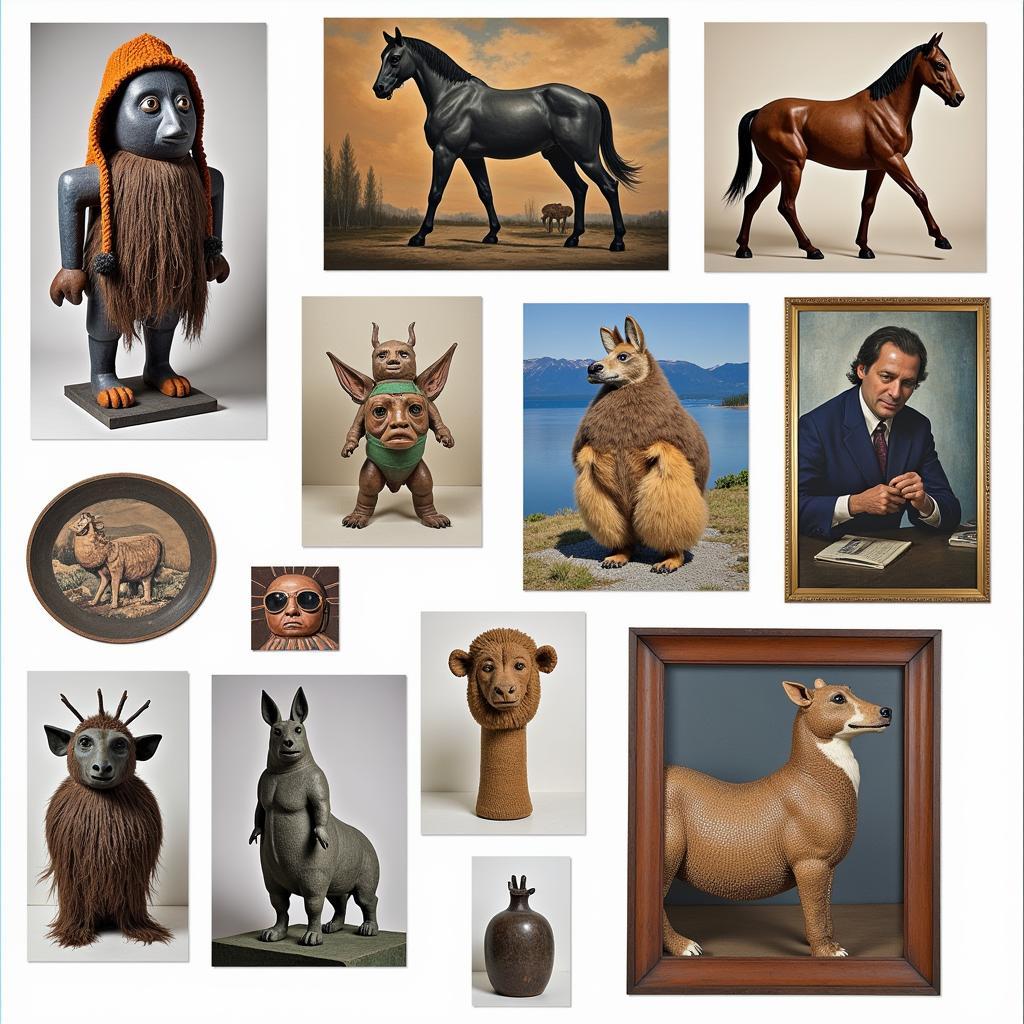Unveiling the Mystique of Aleutian Art
Aleutian Art, a vibrant tapestry of ancient traditions and modern interpretations, offers a captivating glimpse into the rich cultural heritage of the Aleut people, indigenous to the remote and breathtaking Aleutian Islands of Alaska. This unique art form, shaped by a deep connection to the land and sea, reflects the resilience, ingenuity, and spiritual beliefs of a people who have thrived in one of the world’s most challenging environments for millennia.
A Journey Through Time: Exploring the History of Aleutian Art
For centuries, Aleutian art served both practical and ceremonial purposes, intricately woven into the fabric of everyday life. Before contact with Europeans in the 18th century, materials like driftwood, whalebone, walrus ivory, and bird feathers were skillfully transformed into tools, clothing, hunting implements, and ceremonial objects. Each creation bore witness to the resourcefulness of the Aleut people and their profound respect for the natural world.
The arrival of Russian fur traders in the 18th century brought about significant changes in Aleutian art. While traditional materials and techniques persisted, new influences emerged. The introduction of glass beads, for instance, led to the evolution of elaborate beadwork, which became a prominent feature of Aleutian art. These vibrant beads, meticulously stitched onto clothing and accessories, added a new layer of visual richness and cultural significance to Aleutian creations.
A Symphony of Colors and Patterns: Decoding the Symbolism in Aleutian Art
Aleutian art is renowned for its striking geometric patterns, stylized animal motifs, and vibrant colors, each element imbued with deep cultural and spiritual significance. These visual narratives, passed down through generations, offer a window into the Aleut worldview.
“Understanding Aleutian art requires delving into its symbolism,” explains Dr. Anya Volkov, an anthropologist specializing in Aleutian culture. “These aren’t mere decorations; they’re stories etched in ivory, woven into grass, and beaded onto skin.”
Circles, often representing the cyclical nature of life and the interconnectedness of all things, are prevalent in Aleutian art. Triangles, symbolizing strength and stability, are also common, reflecting the Aleut people’s resilience in the face of adversity. Animal motifs, particularly those of sea creatures like whales, seals, and birds, pay homage to the vital role these animals play in Aleutian culture, both as sources of sustenance and as spiritual guides.
Preserving a Legacy: The Enduring Significance of Aleutian Art Today
 Modern art pieces inspired by Aleutian traditions
Modern art pieces inspired by Aleutian traditions
Today, Aleutian art continues to thrive, evolving with each passing generation while remaining deeply rooted in tradition. Contemporary Aleutian artists, drawing upon the legacy of their ancestors, are exploring new mediums and modes of expression, ensuring that their cultural heritage remains vibrant and relevant in the modern world.
From intricately carved masks to contemporary paintings infused with traditional motifs, Aleutian art serves as a powerful reminder of the enduring spirit and artistic brilliance of the Aleut people. It’s a testament to the power of art to transcend time and connect us to the rich tapestry of human experience.


